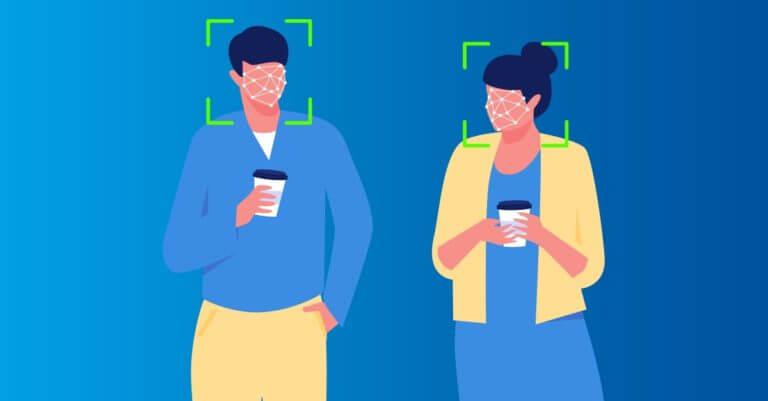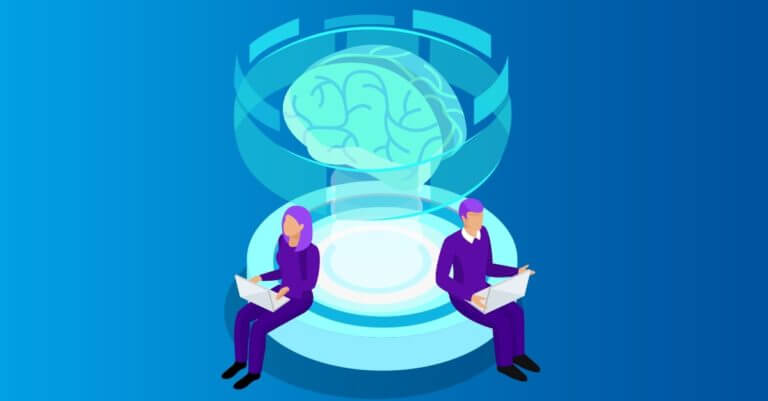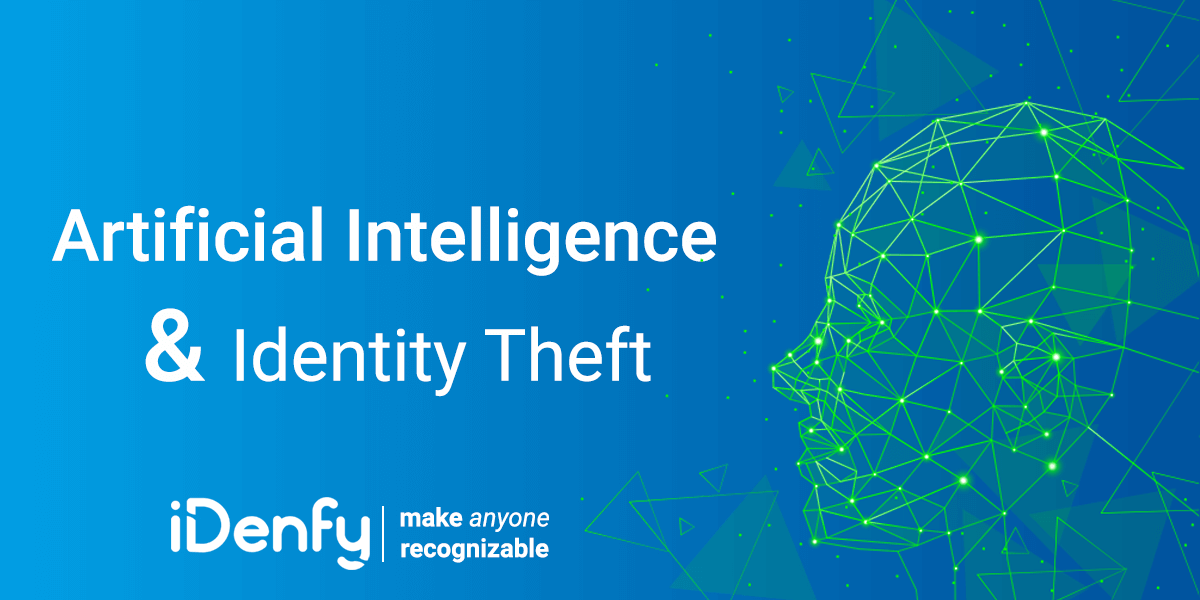Identity theft has turned into big trouble all across the globe. Over the past few years, the world has witnessed several unexpected identity theft cases that include the case of Abraham Abdallah, Gabriel Jimenez, Phillip Cummings, Andrea Harris-Frazier, and more.
Although these cybercriminal acts have alarmed law enforcement agencies around the world and forced them to make strict rules and regulations, the identity theft issue is still growing at an alarming rate.
Identity theft is a rising worry, especially for those businesses that gather personal information from their customers. In the same way, it’s a big concern for consumers who share their private information with such companies in any form.
In a survey conducted by TransUnion, 83% of consumers admitted that they are concerned about identity theft. They said they might become the victim of identity theft within a year or two by having their data stolen from a business.
So, what’s the solution? How can businesses take the identity-proofing of their customers and employees to the next level? Well, AI or artificial intelligence seems an ideal solution to minimize this risk. Since AI facilitates computer systems to make a human-like decision, the technology can be utilized for identity verification and fraud deterrence.
Let’s get to know more about it in the following sections.
What is Artificial Intelligence?
Artificial intelligence (AI) refers to machines’ ability to mimic human behavior. By learning from data, AI algorithms are trained to make predictions, essentially emulating human decision-making processes. AI systems operate by processing extensive sets of labeled training data. They scrutinize this data for correlations and patterns, which they then use to forecast future outcomes.
That’s why AI reduces human workload and is employed in various applications, such as autopilot systems in cars or other fields, like identity verification or facial recognition software. For instance, a chatbot exposed to text samples can learn to produce convincing conversations, while an image recognition tool can identify and describe objects in images after analyzing countless examples. Furthermore, emerging generative AI modules, including ChatGPT, can rapidly generate lifelike text, images, music, and other forms of media with remarkable realism.
Advantages of AI
AI enables cost-effective execution of complex tasks round-the-clock, without interruptions or downtime, and enhances capabilities for differently abled individuals, with broad applicability across various industries.
Here’s a more detailed look into the key benefits that AI brings:
- Efficiency in data-heavy tasks. Industries such as fintech, healthcare, or cryptocurrency utilize AI to expedite the analysis of large datasets, aiding processes like loan applications and fraud detection.
- Precision in detail-oriented tasks. AI excels in automatically diagnosing cancer types like breast cancer and melanoma, matching professional doctors’ accuracy.
- Labor-saving and productivity-boosting. Warehouse automation, increasingly integrated with AI and machine learning, as well as other e-commerce operations, is expected to continue.
- Enhanced customer satisfaction through personalization. AI tailors content, messaging, recommendations, ads, or even websites to individual customers, boosting satisfaction levels.
- Always-available virtual support agents. AI-powered programs provide round-the-clock service without the need for breaks or downtime.
- Consistent outcomes. For example, top-tier AI translation tools ensure reliable results, enabling businesses of all sizes to communicate effectively with customers in their native languages.
What is AI Fraud?
AI fraud involves using artificial intelligence systems for deceptive purposes. Fraudsters employ AI to exploit individuals and organizations, gaining access to sensitive information and embezzling funds. As a result, businesses use AI in fraud detection involving algorithms that monitor data to prevent fraud in real-time.
AI fraud encompasses various tactics such as manipulating algorithms to fabricate identities, generate counterfeit data, craft phishing emails, execute fraudulent transactions, and similar deceitful activities. However, AI is capable of learning from past data to adapt its rules, stopping new threats.
For example, unlike traditional fraud software, AI-powered Anti-Money Laundering (AML) software reduces false positives by refining its rules without slowing down user experience. That’s why proper RegTech solutions are lightweight, ensuring they don’t affect website or mobile app performance.
Identity Verification in the Context of Artificial Intelligence and Machine Learning

AI and its subsets of machine learning are taking the identity verification process to a whole new level. Machine learning lets you establish a powerful identity verification system that requires minimal to no human interference. What’s more, AI solutions offer heightened security and speed.
AI for both identity verification and fraud detection reduces employee time spent on threat investigation and data review, freeing up valuable time for other business operations. This makes it an attractive option for companies to hire third-party ID verification software vendors that could help with the whole process, including integration and personal data management.
Some of the most significant features of AI-enabled identity verification solutions include:
- Accuracy in data collection and verification. Since machine learning ID verification solutions make decisions based on their past experiences, they can continuously learn and correct themselves whenever required. However, for the same, you will need to provide them with accurate data and training.
- Combined efforts of human expertise and automation. Artificial intelligence can be combined with human intelligence to improve the verification process and make it effortless.
Is the Use of Machine Learning in Identity Verification Effective?
Machine learning can prove very competent when it comes to identity fraud prevention. Not only machine learning-based solutions are user-friendly, but they are also capable of identifying the difference between good and bad IDs.
In addition to this, these fraud prevention solutions can expose fraudulent patterns that are not easily detectable by humans or traditional methods. Since machine learning doesn’t rely on a set of rules to detect fraud, instead of acting according to the behavior of a person, it can determine even if a thief develops a new fraud technique.

Machine learning makes the authentication process exceptionally easy. It supports an internal data collection machinery that stores information on the identity authentication process and then shares this data automatically with the responsible authority. Thus it saves time.
As different types of documents such as passport, military ID, driver’s license, resident card, and more are used as proof of identity, understanding these variations can be challenging for standard software or identity fraud application. However, AI-enabled identity verification depends on the collection of metadata on the different document-verification process.
How Does a Machine-Learning Software Work?
Indeed, the metadata does not contain information about the document being processed; instead, it encloses the information about the authentication processes and their outcome. By examining this data, machine-learning software teaches itself to detect complicated patterns and produce correct results.
Unfortunately, sometimes machine learning solutions don’t work correctly, especially when it comes to verifying IDs that are physically damaged or contain minor manufacturing errors, such as slight changes in design. To cope with such situations, you must teach your machine learning program or computer to verify IDs that are worn and damaged but valid.
In the past couple of years, machine learning has been proved to be extremely helpful in detecting online fraud as well. As a result, numerous online businesses have started using this technology to determine problematic online purchasing behaviors and there are many jobs open for machine learning engineers.
Related: How to Spot a Fake ID & Protect Your Business from it
Deep-Learning Biometric Solutions for Identity Management
Biometric identity verification is a popular method to authenticate an identity. Usually, the process involves voice or other biometrics that are checked through facial recognition technology. This user-friendly identity verification method eliminates the requirement of using personally identifiable information (PII) and remembering the password.
Biometric security solutions use deep learning to process complicated information such as faces and languages.
With the help of deep learning, biometric face-recognition technology matches the image of an ID document with a person’s face. Since it uses complex algorithms, it can easily analyze various other patterns, such as the shape of the eye, mouth, and nose.
At last, it gives output that specifies whether or not the image matches with ID’s face.
Ensure your customers are real. Schedule a free demo here.
Automated System with Human Supervision is the Highest Accuracy

If you want to achieve the highest accuracy in identity authentication, you can’t merely rely on automated systems. Don’t forget that they are machines, not humans, and they might fail to identify complex identities. Although automated systems are designed to identify different data points, they can’t replace humans – at least for now.
A human eye can better identify variations in IDs due to damage and manufacturing defects. So, to achieve the highest accuracy and avoid bad customer experiences, use human supervision and automated fraud detection together (find this solution in our Startup and Business packages).
Final Words
Identity fraud is a big issue. The number of data breaches and fraudulent transactions has dramatically increased over the past few years. According to a recent report, the identities of around 60 million Americans were wrongfully obtained in 2018. Another study reveals that every 2 seconds, a new person becomes the victim of identity theft.
Although machine learning and artificial intelligence are playing an important role in helping businesses fight against identity fraud, they still have a long way to go. However, it can’t be denied that with the proper human support, they can fight against complex identity frauds even at this stage.
If you’re in search of an advanced identity verification service for your business, we have got your covered, contact us.
At iDenfy, we help you minimize fraud and make your business compliant. We have a wide range of automated identity verification solutions, including face recognition, liveness detection, identity document checks, and more RegTech and fraud prevention solutions, such as screening and monitoring, risk scoring, or Business Verification.
This blog post was updated on the 20th of March, 2024, to reflect the latest insights.




